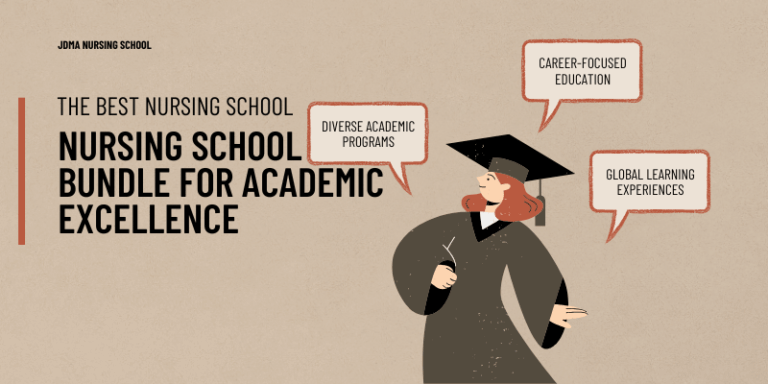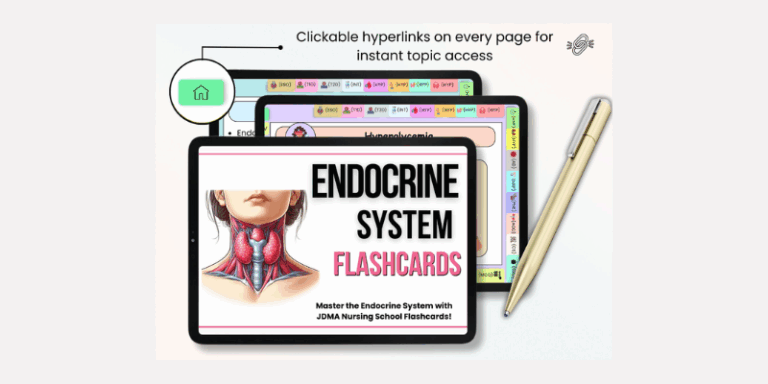
Best Nursing School Bundle for Academic Excellence
Find out which best nursing school bundle ranks best for knowledge retention and test prep. Choose the right bundle for success.
Understanding anatomy and physiology is the cornerstone of a successful career in nursing or medicine. These subjects equip healthcare professionals with essential knowledge about the human bodies structure and function vital for diagnosing diseases, administering treatments and ensuring top notch patient care. As one expert notes, “A deep understanding of anatomy and physiology is the bedrock of medical expertise,” Johnson said. Whether you are starting with Anatomy & Physiology or exploring an anatomy and physiology textbook having access to well structured resources makes all the difference.
Anatomy and physiology are essential subjects for anyone pursuing a career in healthcare. Anatomy focuses on understanding the bodies structure while physiology explores how these structures function together to sustain life. Mastering these concepts is crucial for interpreting vital signs identifying health abnormalities and delivering effective care.
“You can’t treat a patient effectively if you don’t understand how their body works,”
Dr. Sandra Kline a medical education professor at Harvard Medical School. For instance a nurse monitoring a patients vital signs needs to understand. How the cardiovascular system pumps blood and delivers oxygen to tissues. Without this knowledge recognizing critical conditions like hypoxia or hypertension becomes challenging.
Using an anatomy and physiology textbook helps students break down complex processes like how the nervous system communicates or how the respiratory system exchanges gases. These resources often pair theoretical explanations with practical applications ensuring students are prepared for real world scenarios.
By understanding anatomy and physiology healthcare professionals develop a comprehensive skill set that bridges textbook knowledge and patient care. As the foundation of medical science these subjects empower nurses and doctors to diagnose treat and improve lives with precision and confidence.
Doctors and nurses rely heavily on their understanding of anatomy and physiology to identify and address medical conditions. This foundational knowledge allows healthcare professionals to connect symptoms with the underlying systems of the body. For example, a clear grasp of the gastrointestinal system helps nurses pinpoint digestive disorders while understanding neuroanatomy enables early recognition of strokes or neurological diseases.
A study published in the Journal of Advanced Nursing revealed that 78% of nurses agreed their knowledge of anatomy and physiology. Significantly improved their ability to make accurate quick decisions during patient care Journal of Advanced Nursing. This highlights how critical this knowledge is in high pressure environments where time is essential.
Using a reliable anatomy and physiology textbook can provide in depth insights into complex body systems helping students and professionals develop sharp diagnostic skills.
“An accurate understanding of the human body enhances decision making in clinical settings,”
notes Dr. Anne Roberts a clinical educator at Stanford University.
By integrating this expertise healthcare providers can confidently analyse symptoms diagnose conditions and deliver timely effective care improving outcomes for their patients.
In nursing practice a solid understanding of anatomy and physiology is essential when administering medications. Nurses must know how drugs interact with the bodies systems to ensure effective and safe treatment. For example, the liver plays a key role in drug metabolism. Without a clear understanding of how the liver processes medications it becomes difficult to administer the right dosage potentially leading to harmful side effects or treatment failure.
As Dr. Elizabeth Harper a pharmacology expert explains,
“Knowing the anatomy and physiology of the body ensures that medications are used safely and effectively enhancing patient recovery”,
says Harper. Nurses must also understand how the kidneys filter drugs. How the cardiovascular system affects the distribution of medicine throughout the body. This knowledge is critical for adjusting doses preventing drug toxicity and ensuring the medication reaches the targeted area of the body.
An anatomy and physiology textbook offers a comprehensive look at how each system in the body responds to drugs giving students and professionals a deeper understanding of pharmacology. As students integrate this knowledge they improve their ability to make informed decisions ultimately enhancing patient care and promoting better health outcomes.
Effective communication between healthcare providers and patients is key to managing health conditions. Nurses and doctors must have a strong foundation in anatomy and physiology to explain complex medical concepts in a way patients can understand. For example explaining how insulin helps regulate blood sugar in the body allows diabetic patients to better manage their condition. Clear explanations empower patients to make informed decisions about their health.
“Understanding anatomy and physiology not only helps in diagnosing diseases but is also crucial in helping patients understand how their body works,”
says Dr. Michelle Parker a healthcare communication expert. When healthcare providers can explain how the bodies systems work together patients are more likely to follow treatment plans adjust their lifestyles and take necessary precautions.
An anatomy and physiology textbook serves as an excellent tool for healthcare providers to deepen their knowledge and improve patient communication. These resources break down complex bodily processes into understandable concepts helping healthcare professionals convey the information clearly. With this knowledge providers can offer accurate helpful advice leading to improved patient outcomes and trust in healthcare guidance.
Anatomy and physiology textbooks are crucial resources for students pursuing careers in nursing medicine and other healthcare fields. These textbooks provide comprehensive knowledge about the human body helping students understand its structure and function. High quality resources ensure that future healthcare professionals are well prepared to tackle complex medical situations.
Two widely used textbooks in medical education are:
Both textbooks are designed to provide a deep understanding of Anatomy & Physiology ensuring students grasp essential concepts for their future careers. By using a trusted anatomy and physiology textbook students gain the knowledge necessary to excel in both academic and clinical settings ultimately improving patient care.
Anatomy and physiology are fundamental subjects in healthcare education. According to the National Library of Medicine 90% of medical schools in the U.S. require students to take intensive anatomy and physiology courses during their first year of study. This emphasizes how essential these subjects are for building a strong foundation in medical knowledge allowing students to understand the human body and its functions in detail.
A study published in Nurse Education Today found that students who excelled in anatomy and physiology courses had a 35% higher success rate in clinical rotations compared to those who struggled with the subject. This demonstrates the direct link between mastering these subjects and performing well in real world healthcare settings.
To succeed in these courses students often rely on trusted anatomy and physiology textbooks. Resources like “Human Anatomy & Physiology” by Elaine Marieb and Katja Hoehn offer indepth explanations and diagrams helping students comprehend complex bodily systems. By using these textbooks students can build the knowledge necessary to excel in clinical practice and provide effective patient care.
Mastering anatomy and physiology is essential for anyone pursuing a career in nursing or medicine. These subjects provide the foundational knowledge needed to understand the human body diagnose conditions and deliver effective treatments. As Dr. Sandra Kline a medical education expert aptly puts it
“Anatomy and physiology are not just subjects they are the language of medicine”.
For aspiring healthcare professionals investing time in a comprehensive nursing school bundle or nursing school bundle online can provide the resources needed to build a deep understanding of these critical subjects. Utilizing a trusted anatomy and physiology textbook is a key step in mastering the complexities of the body. Applying this knowledge in real world clinical settings ensures that students can confidently provide compassionate effective care. As they continue to build their expertise they will be well prepared to meet the challenges of healthcare and make meaningful impacts on their patients lives.

Find out which best nursing school bundle ranks best for knowledge retention and test prep. Choose the right bundle for success.

Complete nursing school workbook bundle! Includes flashcards for nursing students, cheat sheets, dosage calculation practice, and more.

Master nursing concepts faster with our nursing school flashcards bundle! Printable & digital options for effective studying.
By subscribing to our newsletter you agree to our Terms and Conditions and Privacy Policy